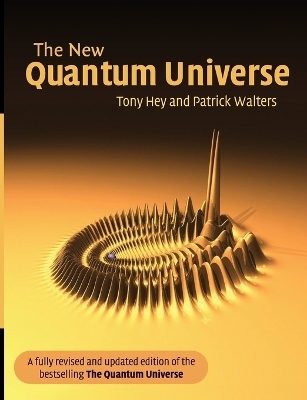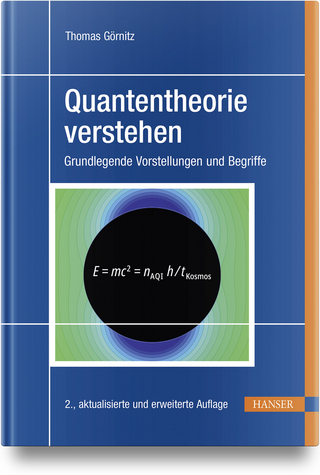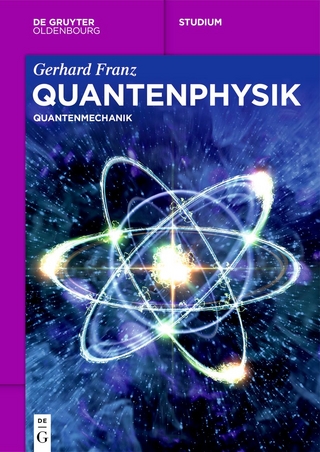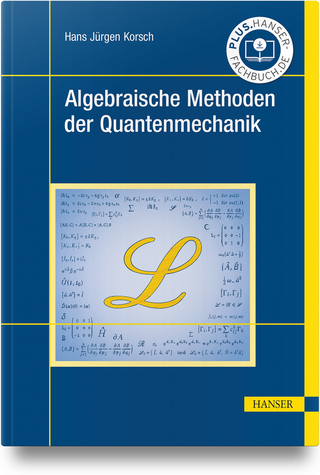
The New Quantum Universe
Seiten
2003
|
2nd Revised edition
Cambridge University Press (Verlag)
978-0-521-56457-1 (ISBN)
Cambridge University Press (Verlag)
978-0-521-56457-1 (ISBN)
Following the success of The Quantum Universe, first published in 1987, a host of exciting discoveries have been made in the field of quantum mechanics. The New Quantum Universe provides an up-to-date and accessible introduction to the essential ideas of quantum physics, and demonstrates how it affects our everyday life.
Following the success of The Quantum Universe, first published in 1987, a host of exciting new discoveries have been made in the field of quantum mechanics. The New Quantum Universe provides an up-to-date and accessible introduction to the essential ideas of quantum physics, and demonstrates how it affects our everyday life. Quantum mechanics gives an understanding of not only atoms and nuclei, but also all the elements and even the stars. The book explains quantum paradoxes and the eventful life of Schroedinger's Cat, along with the Einstein–Podolsky–Rosen paradox and Bell's Inequality. It then looks ahead to the nanotechnology revolution, describing quantum cryptography, quantum computing and quantum teleportation, and ends with an account of quantum mechanics and science fiction. Using simple non-mathematical language, this book is suitable for final-year school students, science undergraduates, and anyone wishing to appreciate how physics allows the new technologies that are changing our lives.
Following the success of The Quantum Universe, first published in 1987, a host of exciting new discoveries have been made in the field of quantum mechanics. The New Quantum Universe provides an up-to-date and accessible introduction to the essential ideas of quantum physics, and demonstrates how it affects our everyday life. Quantum mechanics gives an understanding of not only atoms and nuclei, but also all the elements and even the stars. The book explains quantum paradoxes and the eventful life of Schroedinger's Cat, along with the Einstein–Podolsky–Rosen paradox and Bell's Inequality. It then looks ahead to the nanotechnology revolution, describing quantum cryptography, quantum computing and quantum teleportation, and ends with an account of quantum mechanics and science fiction. Using simple non-mathematical language, this book is suitable for final-year school students, science undergraduates, and anyone wishing to appreciate how physics allows the new technologies that are changing our lives.
Tony Hey is Professor of Computation at the University of Southampton. Patrick Walters is a Senior Lecturer in the Adult Continuing Education Department at the University of Swansea. Previous books by these authors include The Quantum Universe and Einstein's Mirror.
Preface; 1. Waves versus particles; 2. Heisenberg and uncertainty; 3. Schroedinger and matter waves; 4. Atoms and nuclei; 5. Quantum tunnelling; 6. Pauli and the elements; 7. Quantum co-operation and superfluids; 8. Quantum jumps; 9. Quantum engineering; 10. Death of a star; 11. Feynman rules; 12. Weak photons and strong glue; 13. Afterword - quantum physics and science fiction; Epilogue; Appendices.
| Erscheint lt. Verlag | 23.10.2003 |
|---|---|
| Zusatzinfo | 167 Halftones, unspecified; 86 Line drawings, unspecified; 101 Line drawings, color |
| Verlagsort | Cambridge |
| Sprache | englisch |
| Maße | 190 x 247 mm |
| Gewicht | 920 g |
| Themenwelt | Sachbuch/Ratgeber ► Natur / Technik |
| Naturwissenschaften ► Physik / Astronomie ► Quantenphysik | |
| Naturwissenschaften ► Physik / Astronomie ► Theoretische Physik | |
| ISBN-10 | 0-521-56457-3 / 0521564573 |
| ISBN-13 | 978-0-521-56457-1 / 9780521564571 |
| Zustand | Neuware |
| Haben Sie eine Frage zum Produkt? |
Mehr entdecken
aus dem Bereich
aus dem Bereich
Grundlegende Vorstellungen und Begriffe
Buch | Hardcover (2024)
Carl Hanser (Verlag)
CHF 62,95


